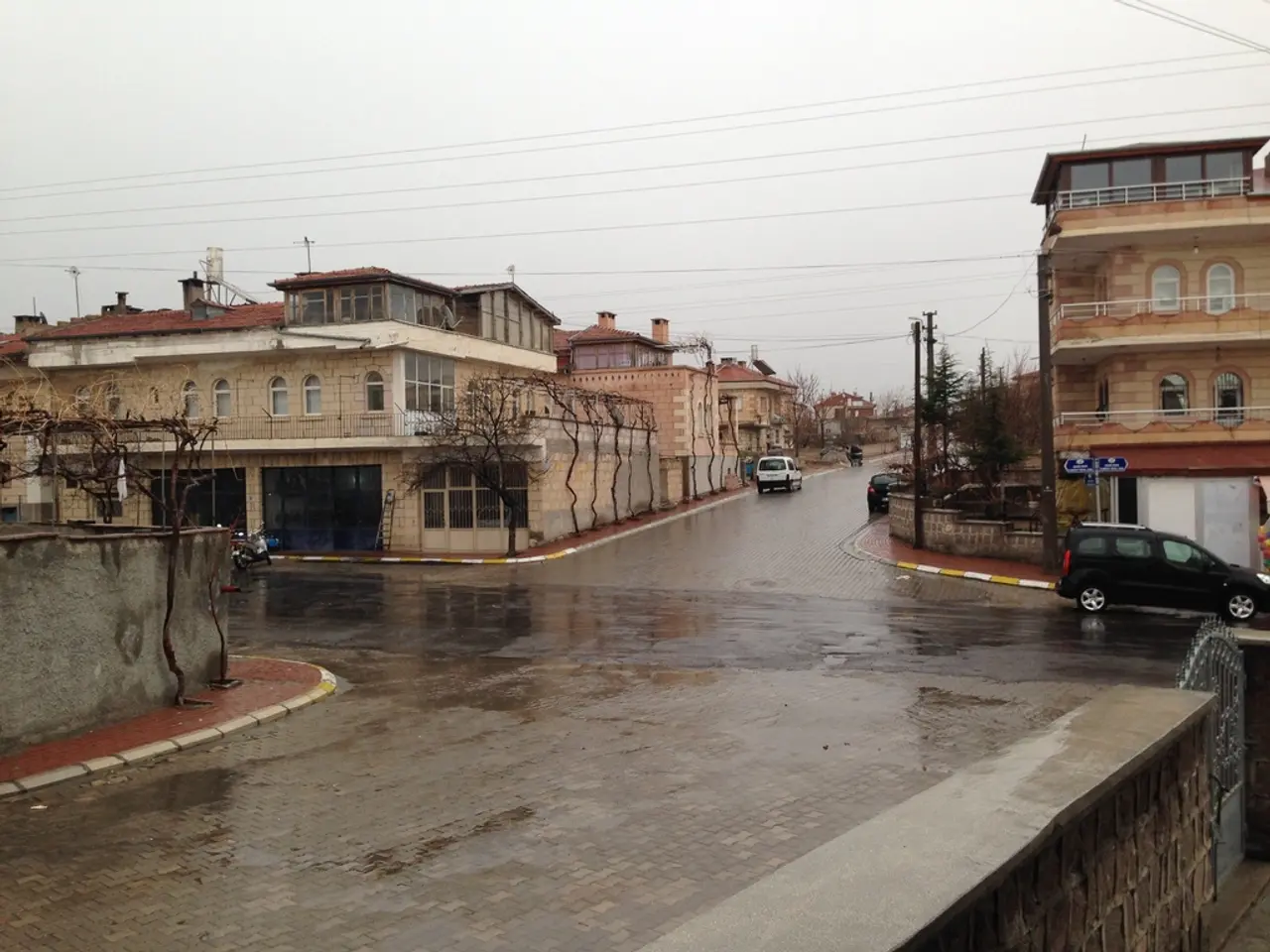Taiwan's Extensive Surveillance System: A Potential Weak Spot during a Potential Chinese Invasion
In the highly surveilled society of Taiwan, with one camera for every five and a half people, the potential risks of such an extensive surveillance infrastructure in the event of a Chinese invasion are a cause for concern.
Taiwan's defence strategy includes hardened, decentralized command centers and dispersed military facilities to mitigate damage from missile strikes and invasions. However, these systems, which rely heavily on surveillance drones, communications stations, and underground command centers, could be targeted by China's grey zone tactics, aiming to exploit systemic vulnerabilities.
China employs a range of grey zone tactics, including disinformation, lawfare, cyberattacks, sabotage, and harassment by Chinese Coast Guard ships close to Taiwanese waters. These tactics could specifically target Taiwan's surveillance networks, causing confusion or paralysis in response coordination.
The experience of Ukraine since Russia's February 2022 invasion shows that the ability to broadcast war crimes can put a country "on a propaganda defensive" and reinforce negative public opinion. In the case of a Taiwan invasion, the Taiwan government must maintain the ability to present its narrative to the world.
The potential negatives of Taiwan's digital surveillance severely outweigh the benefits should an invasion occur. Steps to prevent Chinese reappropriation of this technology may not necessarily mean dismantling cameras, but rather securing them against targeted disruption or exploitation.
Taiwan's mountainous terrain, with over half of the island being mountainous, could make it difficult for China to establish control in the event of an invasion. Three of Taiwan's largest metropolitan centers, Taipei, New Taipei City, and Taichung, are located in mountainous basins, which could provide natural barriers against an invading force.
However, the potential negatives of Taiwan's digital surveillance are not just limited to the risks of targeted disruption or exploitation. The Taiwanese government made nearly 70,000 requests for digital information, including location tracking, communication records, and personal information, from 2015 to 2016. This raises concerns about privacy and civil liberties, even in the absence of a Chinese invasion.
Maintaining the ability to shape global opinion can influence the extent to which third-party actors are willing to provide Taiwan aid and the extent to which countries would economically sanction China. In this regard, the Taiwanese government must strike a balance between security and privacy, ensuring that its surveillance infrastructure does not compromise its ability to present its narrative to the world.
Reed Bauer, a second lieutenant in the United States Army infantry and a Fulbright scholar and master's student at National Chengchi University in Taipei, Taiwan, highlights the importance of this balance. In the event of a Taiwan invasion, the Taiwan government must prioritize the protection of its citizens' privacy while ensuring its operational effectiveness.
In conclusion, while Taiwan's extensive surveillance infrastructure has been instrumental in maintaining security, its reliance on these systems presents risks that China seeks to exploit through multifaceted grey zone tactics, potentially compromising Taiwan’s operational effectiveness in the early and critical stages of a conflict. It is crucial for the Taiwanese government to address these vulnerabilities and strike a balance between security and privacy to maintain its ability to present its narrative to the world.
[1] "China's Grey Zone Tactics and Their Implications for Taiwan," The Diplomat, 22 May 2020, https://thediplomat.com/2020/05/chinas-grey-zone-tactics-and-their-implications-for-taiwan/
[2] "Taiwan's Defense Strategy in the Face of Chinese Greyzone Warfare," Asia Times, 14 February 2020, https://asiatimes.com/2020/02/taiwans-defense-strategy-in-the-face-of-chinese-greyzone-warfare/
[3] "Taiwan's Surveillance and Command Infrastructure: Vulnerabilities and Resilience," The Jamestown Foundation, 10 February 2020, https://jamestown.org/program/taiwans-surveillance-and-command-infrastructure-vulnerabilities-and-resilience/
[4] "China's Grey Zone Tactics in the South China Sea," Council on Foreign Relations, 1 August 2019, https://www.cfr.org/backgrounder/chinas-grey-zone-tactics-south-china-sea
[5] "Taiwan's Energy Security in the Event of a Chinese Invasion," The Diplomat, 27 May 2020, https://thediplomat.com/2020/05/taiwans-energy-security-in-the-event-of-a-chinese-invasion/
- The Taiwanese government must secure its digital surveillance systems against Chinese attempts to disrupt or exploit them, as these systems play a crucial role in defending the country, particularly in the event of a war-and-conflicts situation.
- In the context of China's employment of grey zone tactics such as cyberattacks, disinformation, and lawfare, it is essential for Taiwan to prioritize policy-and-legislation updates to protect its military, technology, and general-news infrastructure from potential attacks.
- As the political landscape of Taiwan relies heavily on communicating its narrative to the world, maintaining operational effectiveness becomes crucial during times of conflict or military aggression. This can be achieved by ensuring a balance between security and civil liberties, as emphasized by Reed Bauer, a second lieutenant in the United States Army infantry and a Fulbright scholar.
- In the face of China's grey zone tactics and the risks they pose to Taiwan's security, politics, and technology, it is vital for the Taiwanese government to strengthen its command centers, military facilities, and cyber defenses to counteract these threats and preserve the country's operational effectiveness.



